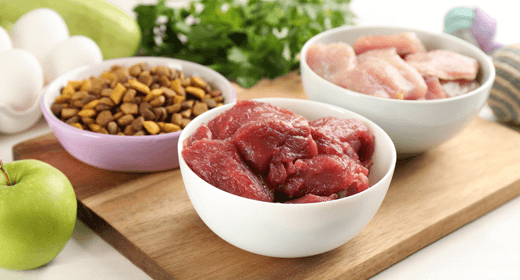

Leash training can help your puppy safely explore the world beyond your house or backyard. It can enhance your dog’s walking experience and help you bond with it better. We must remember that dogs are not born with the ability to walk on a leash, they need to be taught. As their caregivers, we need to help them learn this skill comfortably.
If you have a large breed pup, it is imperative that you train it while it is still young. Once your fur baby grows up to be heavy, you will have a tough time handling it on a leash. You do not want to be dragged along the ground or see your dog get into an easily avoidable fracas.
In case you are wondering at what age to start leash training a puppy, here’s your answer: You are start at 10 weeks of its age, however, you must know that it can be done earlier. It will help your pup grow into an obedient pawsome pal. Leash training also makes it easier for you to travel with your pet and embark on exciting adventures seamlessly! Train your puppies while they are still young as it will stay with them for the rest of their lives.
If you are facing any trouble with how to teach your puppy to walk on a leash, here are some tips to get you started:
Picking the right collar is the first step to getting your dog used to a puppy leash. It is imperative that your fur baby feels comfortable in it. So, make sure that the collar is neither too tight nor too loose; there should be space for at least two fingers under it. While leash training your puppy, breathability and comfort is of paramount importance.
Note: If you plan on training your puppy at an early age, stay attentive during sessions. Since your little furry friend will be at a developing stage, it will outgrow its collar soon. Make sure that you keep checking the fit of the collar and change it as and when needed.
Your puppy will need some time to get used to the leash. For puppies, this is an alien thing, and they will need some time to adjust and accept this new accessory. You can help your pup ease into this process by trying a few tricks. It needs to resonate a leash with fun times. Let it spend some time playing with the leash. You can also make your canine companion wear it every time you are having a fun time together at home. Do not put it on when it is alone, sad, or irritated.
As you teach your puppy how to walk on a leash, remember that rewarding it with treats will only promote good behaviour. Grab a treat in your hands and take a few steps back. This will encourage your pooch to walk towards you to devour its favourite treat. To avoid overeating, you can also reward the pup with toys, praises, or belly rubs.
Note: Do not stretch your dog’s leash training for prolonged hours. It might get exhausted and shy away from training.
Indoor practice is the best way of gauging how your canine companion fares with the concept of walking on leash. This will also help you get your puppy used to the leash without losing control of it. Choose a decent stretch of floor in your home, make sure there are no obstructions, and just start walking with your puppy on a leash. At the end of one stretch, reward it with treats. Stay attentive during these session to know when your pup is ready for the world outside your home.
Teaching your puppy how to walk on a leash is going to be full of surprises. If you think that your pet will easily walk on a leash outdoors once it has learnt to do it indoors, you are mistaken. Being curious is only natural and that is exactly what will happen once your four-legged friend realises that it is not at home anymore! Your dog will want to sniff every corner, every plant, and whatever it sets its eyes on. Hence, start with short outdoor walks!
Note: Carry some treats with you to encourage your puppy to follow you!
Remember that patience is key! And your furry friend is not the only one who needs to be patient during this process. Your puppy is going to need some time to get used to this walking style and you need to give it that time. Moreover, make sure that this transition is smooth and comfortable for your pup. Once you start putting these tips into action, you two can start taking long strolls together.
You can start leash training your puppy once it turns 10 weeks old.
The best way to stop your puppy from pulling on the leash is to change the direction by using the command ‘turn.’
No. Dragging your puppy on leash is not healthy. Along with injuring your fur baby’s neck and knees, it will also ignite negative feelings towards you.
A puppy should use both a collar and harness. A collar can be worn every day to hold ID tags, whereas a harness can be used for walks and other activities.


Nutrients are divided into subcategories: protein, carbohydrates, fats, vitamins and minerals, and water. Regular brushing and professional cleaning can keep your dog’s teeth healthy and gleaming. Giving your pet appropriate toys to chew prevents fractures.
Common dog food protein sources include meat, poultry, fish, and some plant ingredients, such as corn gluten and soybean meal.
IAMS™ dog food incorporates chicken as a primary ingredient in all of its products, providing dogs with a rich and complete source of protein.
Protein is best known for supplying amino acids to build hair, skin, nails, muscles, tendons, ligaments, and cartilage. It also plays a main role in hormone production.
Dogs, best fed as carnivores, require essential amino acids that are not all found in the proper balance in single plant protein sources such as soybean meal.
Common carbohydrate sources are plants and grains. Carbohydrates, also categorized as starches (sugars) and fibers, provide energy and bulk, respectively.
Starches are made up of various types of sugar, such as glucose or fructose. Through digestion, dogs can easily convert sugar into usable energy.
Fiber may or may not be fermented or broken down into short-chain fatty acids by bacteria in a dog’s intestines. Highly fermentable fiber sources, such as vegetable gums, provide high amounts of short-chain fatty acids. Moderately fermentable fibers, such as beet pulp, provide short-chain fatty acids and bulk for moving waste. Slightly fermentable fibers, such as cellulose, provide mainly bulk for moving waste through the digestive tract and only a few short-chain fatty acids. Highly fermentable fiber sources
Water is the single most important nutrient for the body. Without it, the body cannot transport nutrients, digest nutrients for energy, regulate temperature, or eliminate water.
Fats are found in meats, poultry, fish, and plant oils. Fat, for all its bad press, fulfills many vital body functions. Animal cell membranes are made of fat. Fat also helps maintain body temperature, control inflammation, and more. Fat is the primary form of stored energy in the body, providing twice as much energy as carbohydrates or proteins.
Fats also have been shown to be important in blood clotting and managing inflammation.
Vitamins are responsible for aiding functions such as bone growth, blood clotting, energy production, and oxidant protection. Vitamins A, D, E, and K require fat for absorption into the body, while vitamins such as the B-complex vitamins and vitamin C need water to be absorbed into the body.
Minerals provide skeletal support and aid in nerve transmission and muscle contractions.